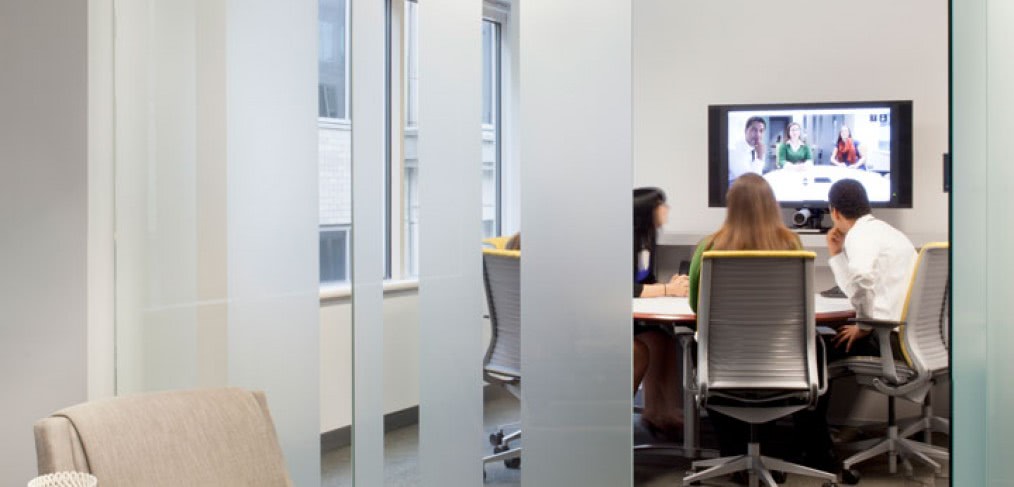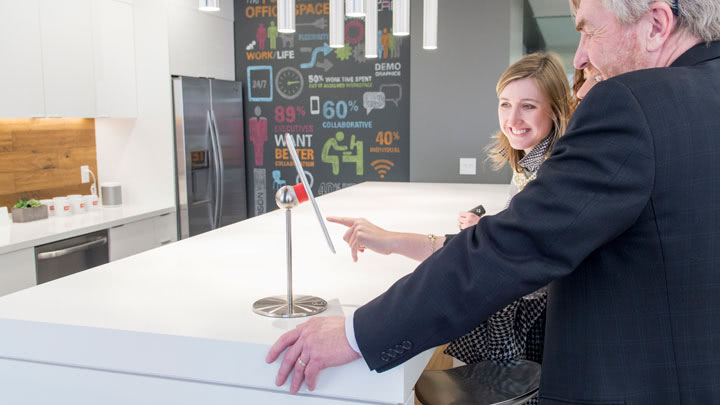
Where is the Video Chat?
At a recent meeting, I sat next to someone with a wad of tape over their webcam. Curious, I leaned over and whispered, “Is your laptop broken?”
“No,” she said, “It’s just too creepy.”
I was confused by the answer. Video chat is, in theory, one of the best tools for distributed teams. Whether on FaceTime, Skype, Lync or Jabber, video chat offers much richer interaction than a phone call because both parties can communicate with physical cues such as facial expressions and hand gestures in addition to their voices.
Yet, despite these benefits, employees at many companies make little use of video chat, and remain in conference-call hell. In an age when your boss could be in Cairo and your team in Brussels, why don’t we use our webcams more for work?
Not Right Now
There are legitimate reasons to keep your webcam offline entirely—for example, to lay low from the eyes of the NSA, or protect your goldfish from the Russians.
However, people I know who video chat every day with family and friends often don’t use video chat for work. Why the difference?
One important reason is we’re not always ready to be seen by coworkers. The expectations for appearance are higher in work settings, but in the age of working from anywhere, I often find myself sending emails in… less than a suit.
Regardless of your getup, an unannounced video chat can simply be too immediate. The thought of your boss’ face popping up any time would be stressful. We don’t want this, and we respect others in turn by not intruding on their work bubble.
Lastly, we often need to collaborate on something in addition to talking. Video chat by itself is just a meeting. And we already have enough meetings.
OK Intimacy
The trouble is, when we don’t video chat in order to protect our propriety, avoid intruding on others or skip that extra meeting, we’re missing out on the chance to interact meaningfully with colleagues and build a cohesive, personal team—a key factor in employee engagement. Clearly, if there were a way to make video chat more work-friendly, it would be worth it.
There isn’t much we can do about appearances—besides to suggest that those at home clean up a bit, and those on the other end of the line relax. There’s a tradeoff here, admittedly, but it might be worth the extra effort to cash in on the benefits of face time.
Let’s assume everyone is dressed. One way we might make video chat more socially comfortable is by borrowing an architecture concept known as an intimacy gradient.
The idea, identified by Christopher Alexander in A Pattern Language: Towns, Buildings, Construction, is people are more comfortable when they can control their level of exposure to others. Therefore, spaces that provide multiple options for different levels of exposure, from private to public, will tend to be more successful.
As Allan Jacobs brilliantly points out, intimacy gradients apply equally to how we interact with others via technology (for example, Twitter offers both private and public accounts).
By itself, video chat is all intimacy, no gradient—maybe that’s why it can be too intense for work. But we could introduce an intimacy gradient into our virtual communication landscape. For example, consider first messaging someone over email or chat. These are less intrusive, less personal and give the recipient more control. (This and more tips on making video collaboration less awkward here.)
We can make collaboration over video chat more productive, too, by pairing video chat with real-time collaboration tools like Google Docs. Bam. Now you can see the other person and work on the same document at the same time! It’s almost like you’re in the same place!
Give Me Video or Give Me Sleep
Each year, more and more company meetings are held remotely, NPR reports. This allows participation from more locations. But what kind of participation? One investor commented:
“Face time is still important,” Borrus says, “Investors should have the opportunity once a year to look the CEO and the board members in the eye. And with virtual-only meetings you could miss out on telling moments — some things that you only get from being in the same room with someone.” [Emphasis added.]
Thanks to video chat, today we can have meetings virtually and still get that “in the room” feeling. Even better if it is socially comfortable and collaboratively productive.
And remember—even with the effort required to get past the challenges above, a video chat still beats everyone falling asleep on WebEx.


